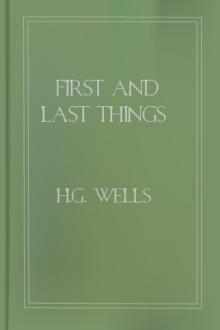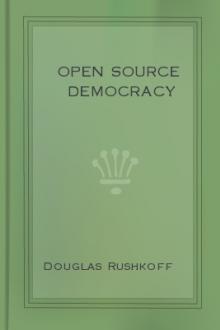The Library, Andrew Lang [online e book reading txt] 📗

- Author: Andrew Lang
- Performer: -
Book online «The Library, Andrew Lang [online e book reading txt] 📗». Author Andrew Lang
Bewick’s first work of any importance was the Gay’s “Fables” of 1779. In 1784 he did another series of “Select Fables.” Neither of these books, however, can be compared with the “General History of Quadrupeds,” 1790, and the “British Land and Water Birds,” 1797 and 1804. The illustrations to the “Quadrupeds” are in many instances excellent, and large additions were made to them in subsequent issues. But in this collection Bewick laboured to a great extent under the disadvantage of representing animals with which he was familiar only through the medium of stuffed specimens or incorrect drawings. In the “British Birds,” on the contrary, his facilities for study from the life were greater, and his success was consequently more complete. Indeed, it may be safely affirmed that of all the engravers of the present century, none have excelled Bewick for beauty of black and white, for skilful rendering of plumage and foliage, and for fidelity of detail and accessory. The “Woodcock” (here given), the “Partridge,” the “Owl,” the “Yellow-Hammer,” the “Yellow-Bunting,” the “Willow-Wren,” are popular examples of these qualities. But there are a hundred others nearly as good.
Among sundry conventional decorations after the old German fashion in the first edition of the “Quadrupeds,” there are a fair number of those famous tailpieces which, to a good many people, constitute Bewick’s chief claim to immortality. That it is not easy to imitate them is plain from the failure of Branston’s attempts, and from the inferior character of those by John Thompson in Yarrell’s “Fishes.”
The genius of Bewick was, in fact, entirely individual and particular. He had the humour of a Hogarth in little, as well as some of his special characteristics,—notably his faculty of telling a story by suggestive detail. An instance may be taken at random from vol. I. of the “Birds.” A man, whose wig and hat have fallen off, lies asleep with open mouth under some bushes. He is manifestly drunk, and the date “4 June,” on a neighbouring stone, gives us the reason and occasion of his catastrophe. He has been too loyally celebrating the birthday of his majesty King George III.
Another of Bewick’s gifts is his wonderful skill in foreshadowing a tragedy. Take as an example, this truly appalling incident from the “Quadrupeds.” The tottering child, whose nurse is seen in the background, has strayed into the meadow, and is pulling at the tail of a vicious-looking colt, with back-turned eye and lifted heel.
Down the garden-steps the mother hurries headlong; but she can hardly be in time. And of all this—sufficient, one would say, for a fairly-sized canvas—the artist has managed to give a vivid impression in a block of three inches by two! Then, again, like Hogarth once more, he rejoices in multiplications of dilemma. What, for instance, can be more comically pathetic than the head-piece to the “Contents” in vol. I. of the “Birds”? The old horse has been seized with an invincible fit of stubbornness. The day is both windy and rainy. The rider has broken his stick and lost his hat; but he is too much encumbered with his cackling and excited stock to dare to dismount. Nothing can help him but a Deus ex machina,—of whom there is no sign.
Besides his humour, Bewick has a delightfully rustic side, of which Hogarth gives but little indication. From the starved ewe in the snow nibbling forlornly at a worn-out broom, to the cow which has broken through the rail to reach the running water, there are numberless designs which reveal that faithful lover of the field and hillside, who, as he said, “would rather be herding sheep on Mickle bank top” than remain in London to be made premier of England. He loved the country and the country-life; and he drew them as one who loved them. It is this rural quality which helps to give such a lasting freshness to his quaint and picturesque fancies; and it is this which will continue to preserve their popularity, even if they should cease to be valued for their wealth of whimsical invention.
In referring to these masterpieces of Bewick’s, it must not be forgotten that he had the aid of some clever assistants. His younger brother John was not without talent, as is clear from his work for Somervile’s “Chace,” 1796, and that highly edifying book, the “Blossoms of Morality.” Many of the tailpieces to the “Water Birds” were designed by Robert Johnson, who also did most of the illustrations to Bewick’s “Fables” of 1818, which were engraved by Temple and Harvey, two other pupils. Another pupil was Charlton Nesbit, an excellent engraver, who was employed upon the “Birds,”
and did good work in Ackermann’s “Religious Emblems” of 1808, and the second series of Northcote’s “Fables.” But by far the largest portion of the tailpieces in the second volume of the “Birds” was engraved by Luke Clennell, a very skilful but unfortunate artist, who ultimately became insane. To him we owe the woodcuts, after Stothard’s charming sketches, to the Rogers volume of 1810, an edition preceding those already mentioned as illustrated with steel-plates, and containing some of the artist’s happiest pictures of children and amorini. Many of these little groups would make admirable designs for gems, if indeed they are not already derived from them, since one at least is an obvious copy of a well-known sardonyx—(“The Marriage of Cupid and Psyche.”) This volume, generally known by the name of the “Firebrand” edition, is highly prized by collectors; and, as intelligent renderings of pen and ink, there is little better than these engravings of Clennell’s. {12}
Finally, among others of Bewick’s pupils, must be mentioned William Harvey, who survived to 1866. It has been already stated that he engraved part of the illustrations to Bewick’s “Fables,” but his best known block is the large one of Haydon’s “Death of Dentatus.”
Soon after this he relinquished wood-engraving in favour of design, and for a long period was one of the most fertile and popular of book-illustrators. His style, however, is unpleasantly mannered; and it is sufficient to make mention of his masterpiece, the “Arabian Nights” of Lane, the illustrations to which, produced under the supervision of the translator, are said to be so accurate as to give the appropriate turbans for every hour of the day. They show considerable freedom of invention and a large fund of Orientalism.
Harvey came to London in 1817; Clennell had preceded him by some years; and Nesbit lived there for a considerable time. What distinguishes these pupils of Bewick especially is, that they were artists as well as engravers, capable of producing the designs they engraved. The “London School” of engravers, on the contrary, were mostly engravers, who depended upon others for their designs. The foremost of these was Robert Branston, a skilful renderer of human figures and indoor scenes. He worked in rivalry with Bewick and Nesbit; but he excelled neither, while he fell far behind the former. John Thompson, one of the very best of modern English engravers on wood, was Branston’s pupil. His range was of the widest, and he succeeded as well in engraving fishes and birds for Yarrell and Walton’s “Angler,” as in illustrations to Moliere and “Hudibras.” He was, besides, a clever draughtsman, though he worked chiefly from the designs of Thurston and others. One of the most successful of his illustrated books is the “Vicar of Wakefield,”
after Mulready, whose simplicity and homely feeling were well suited to Goldsmith’s style. Another excellent engraver of this date is Samuel Williams. There is an edition of Thomson’s “Seasons,” with cuts both drawn and engraved by him, which is well worthy of attention, and (like Thompson and Branston) he was very skilful in reproducing the designs of Cruikshank. Some of his best work in this way is to be found in Clarke’s “Three Courses and a Dessert,”
published by Vizetelly in 1830.
From this time forth, however, one hears less of the engraver and more of the artist. The establishment of the “Penny Magazine” in 1832, and the multifarious publications of Charles Knight, gave an extraordinary impetus to wood-engraving. Ten years later came “Punch,” and the “Illustrated London News,” which further increased its popularity. Artists of eminence began to draw on or for the block, as they had drawn, and were still drawing, for the “Annuals.”
In 1842-6 was issued the great “Abbotsford” edition of the “Waverley Novels,” which, besides 120 plates, contained nearly 2000 wood-engravings; and with the “Book of British Ballads,” 1843, edited by Mr. S. C. Hall, arose that long series of illustrated Christmas books, which gradually supplanted the “Annuals,” and made familiar the names of Gilbert, Birket Foster, Harrison Weir, John Absolon, and a crowd of others. The poems of Longfellow, Montgomery, Burns, “Barry Cornwall,” Poe, Miss Ingelow, were all successively “illustrated.” Besides these, there were numerous selections, such as Willmott’s “Poets of the Nineteenth Century,” Wills’s “Poets’ Wit and Humour,” and so forth. But the field here grows too wide to be dealt with in detail, and it is impossible to do more than mention a few of the books most prominent for merit or originality. Amongst these there is the “Shakespeare” of Sir John Gilbert. Regarded as an interpretative edition of the great dramatist, this is little more than a brilliant tour de force; but it is nevertheless infinitely superior to the earlier efforts of Kenny Meadows in 1843, and also to the fancy designs of Harvey in Knight’s “Pictorial Shakespeare.” The “Illustrated Tennyson” of 1858 is also a remarkable production. The Laureate, almost more than any other, requires a variety of illustrators; and here, for his idylls, he had Mulready and Millais, and for his romances Rossetti and Holman Hunt.
His “Princess” was afterwards illustrated by Maclise, and his “Enoch Arden” by Arthur Hughes; but neither of these can be said to be wholly adequate. The “Lalla Rookh” of John Tenniel, 1860, albeit somewhat stiff and cold, after this artist’s fashion, is a superb collection of carefully studied oriental designs. With these may be classed the illustrations to Aytoun’s “Lays of the Scottish Cavaliers,” by Sir Noel Paton, which have the same finished qualities of composition and the same academic hardness. Several good editions of the “Pilgrim’s Progress” have appeared,—notably those of C. H. Bennett, J. D. Watson, and G. H. Thomas. Other books are Millais’s “Parables of our Lord,” Leighton’s “Romola,” Walker’s “Philip” and “Denis Duval,” the “Don Quixote,” “Dante,” “La Fontaine” and other works of Dore, Dalziel’s “Arabian Nights,”
Leighton’s “Lyra Germanica” and “Moral Emblems,” and the “Spiritual Conceits” of W. Harry Rogers. These are some only of the number, which does not include books like Mrs. Hugh Blackburn’s “British Birds,” Wolf’s “Wild Animals,” Wise’s “New Forest,” Linton’s “Lake Country,” Wood’s “Natural History,” and many more. Nor does it take in the various illustrated periodicals which have multiplied so freely since, in 1859, “Once a Week” first began to attract and train such younger draughtsmen as Sandys, Lawless, Pinwell, Houghton, Morten, and Paul Grey, some of whose best work in this way has been revived in the edition of Thornbury’s “Ballads and Songs,”
recently published by Chatto and Windus. Ten years later came the “Graphic,” offering still wider opportunities to woodcut art, and bringing with it a fresh school of artists. Herkomer, Fildes, Small, Green, Barnard, Barnes, Crane, Caldecott, Hopkins, and others,—quos nunc perscribere longum est—have contributed good work to this popular rival of the older, but still vigorous, “Illustrated.” And now again, another promising serial, the “Magazine of Art,” affords a supplementary field to modern refinements and younger energies.
Not a few of the artists named in the preceding paragraph have also earned distinction in separate branches





Comments (0)